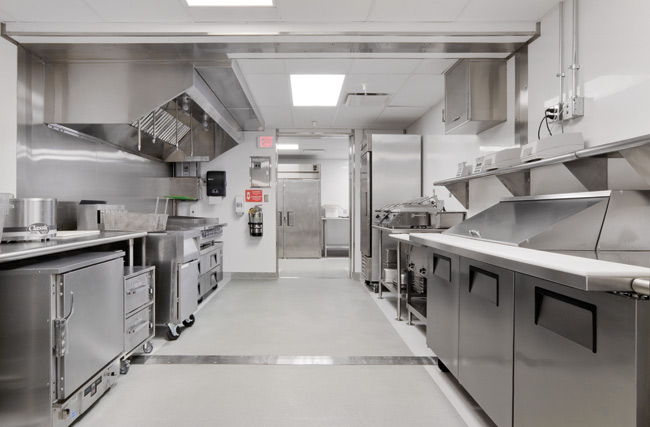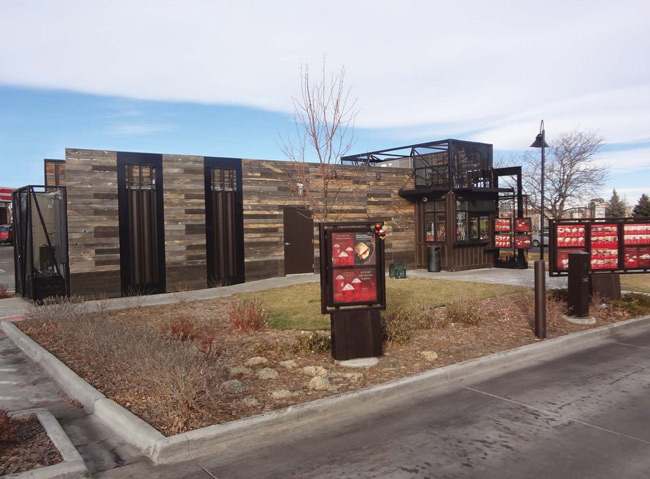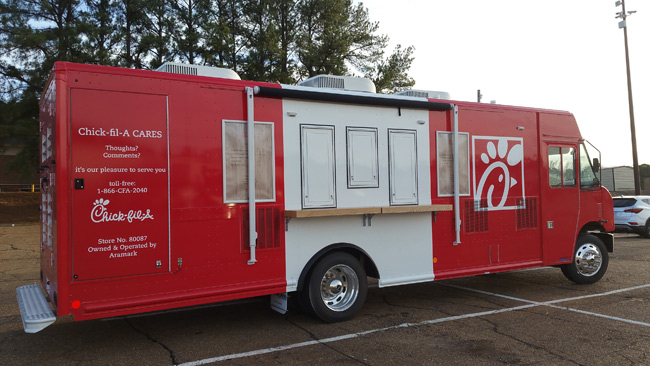Food is a means of connection; a shared interest to bring us together and so ingrained in our lives that many food trends directly link to lifestyle trends. So, what happens to food culture now that we’ve been largely isolated for months?
2020 has been disruptive for foodservice but operators have not let a pandemic hamper their activity and creativity. In fact, they’ve been busier than ever keeping customers engaged under very challenging conditions.
Food will continue to play a critical role both culturally and psychologically so operators need to remain nimble and focus on how their business can leverage new trends when the pandemic is over. The world has changed but there is opportunity in a post-pandemic world!
Kitchens of the Future
Kitchens To Go provides mobile, modular and containerized foodservice facilities that are ideal solutions for the kitchens and restaurants of the future. The foodservice industry continues to change in response to the global pandemic and many trends are emerging that KTG is uniquely situated to support. While most of these trends can trace their origin to far before the shutdown, they have been fast-tracked to fill the new needs of the market.
Trend One: Smaller Footprints
Smaller restaurant footprints can result in real estate savings, help improve efficiency and save on labor costs. Quick-serve brands are considering suspending kitchens and dining rooms above drive-thru lanes to minimize building size. Advances in multi-use foodservice technologies now provide flexible cooking options for any style of menu in virtually any size footprint.
Right-sizing square footage to the needs of the menu or customer-base will become a competitive differentiator. By adjusting the restaurant’s footprint to the market rather than adjusting the operation to fit a footprint, operators can achieve high efficiency in ways not possible otherwise.
 Modular kitchens offer state-of-the art equipment, functionality, and design.
Modular kitchens offer state-of-the art equipment, functionality, and design.
Trend Two: Safety and Sanitization
In a world moving toward touchless dispensers and multi-layered protection for indoor spaces, the most important facet of the new normal centers around food safety and space sanitization. Concern isn’t about the virus growing in food but from contracting it directly from people through the air and contaminated surfaces. It is critical to establish and maintain robust protocols for cleaning, disinfecting and sanitizing both kitchen and dining spaces.
Operators have relocated non-perishable item storage to centralized facilities to reduce space usage and declutter cooking areas to facilitate easy sanitation. Similarly, restaurant chains are batch-prepping ingredients in centralized commissaries for distribution to their network of kitchens for finishing-to-order. Adopting this strategy allows for greater consistency across locations and quicker execution of the menu. It also ensures consistent storage protocols via single storage units versus monitoring storage in multiple locations.
 Walk-up containerized outposts offer smaller footprint, menu flexibility and support safe distancing protocols.
Walk-up containerized outposts offer smaller footprint, menu flexibility and support safe distancing protocols.
Trend Three: Maximum Flexibility
2020 has taught us the importance of flexibility. In foodservice, flexibility focuses on three areas: concept, technology and staffing.
Consumers crave what they can’t make at home. Operators can drive business either in person, or through mobile apps, with innovative menu offerings. Restaurants of the future will have to be flexible in their concept, whether through limited-ingredient menus or adding fast-casual delivery menus to fine dining kitchens during off-peak hours. Being flexible enough to adjust based on shifting market conditions has become – and will increasingly be – a necessity.
The kitchen of the future will need flexibility in technology. Equipment with single specialized functions is being replaced with flexible multi-use counterparts. Natural gas is being traded for the more-flexible electric option with greater frequency, lowering overhead and decreasing labor costs.
Staffing also needs to be flexible with cross-functional teams preventing inefficiencies. Smaller, versatile teams can lead to greater employee satisfaction and retention and reduction of losses. These compounding efficiencies help to provide the margins necessary for survival in the new market.
Trend Four: Drive-Thru
Drive-thru gained increased momentum in 2020 not only due to convenience but also personal safety. Designs focused on efficient ordering and food delivery to meet new consumer behaviors are being unveiled with emphasis on better work environments and enhanced customer experiences. Brighter kitchen spaces, covered outdoor seating areas, additional lanes for delivery drivers only, curbside pickup with designated parking spots, and coded pick-up lockers are innovations planned for 2021, and beyond, as operators seek to expand brand reach and attract new audiences.
 Modular drive-thrus minimize contact between customers and employees and allow brand expansion into suburban areas.
Modular drive-thrus minimize contact between customers and employees and allow brand expansion into suburban areas.
 For on-the-go dining and brand expansion, food trucks can be relocated as needed to diffuse the dining population.
For on-the-go dining and brand expansion, food trucks can be relocated as needed to diffuse the dining population.
Solutions with Kitchens To Go
Kitchens To Go is the leader in flexible foodservice facilities and provides for lease or purchase comprehensive mobile, modular, and containerized commercial kitchens and ancillary support solutions. Foodservice operators have trusted KTG for almost 40 years to help maintain business continuity.
As trends continue to evolve, so will the need for operations to do so. Facilities from Kitchens to Go are robust and relocatable and can be customized for any foodservice function.
For planned renovations and unplanned situations, kitchen and dining facilities from Kitchens To Go will Keep You Cooking!



